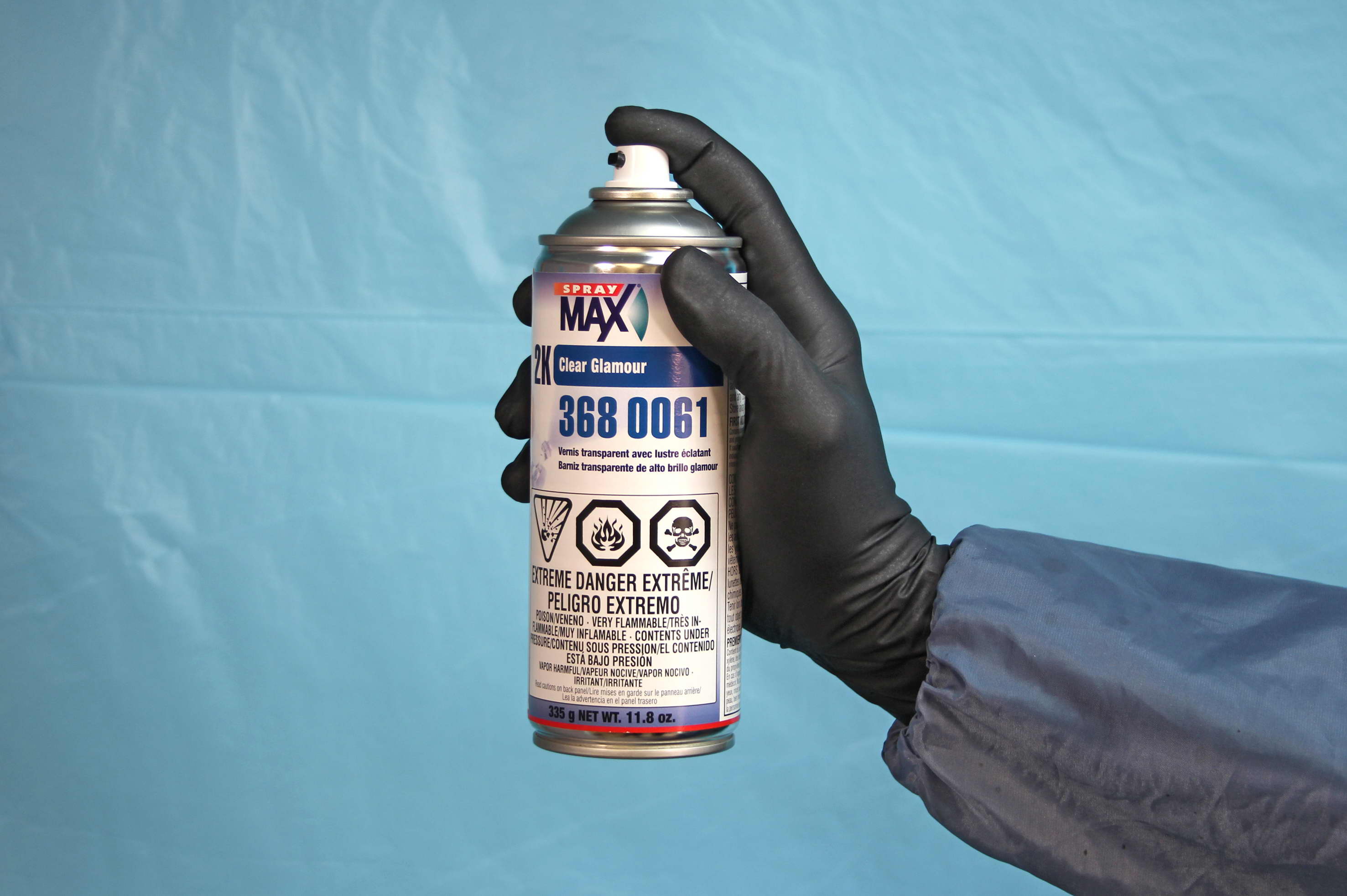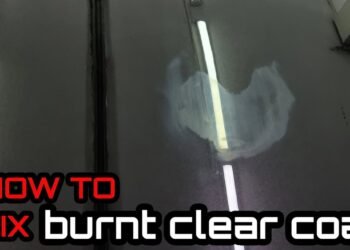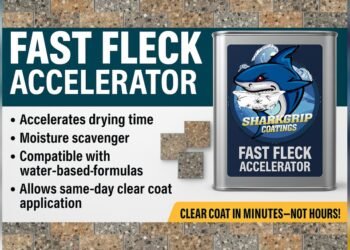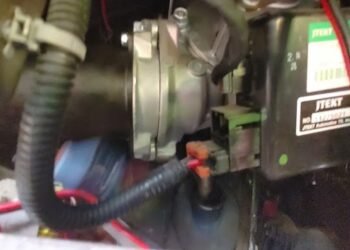When you’re working with 2K clear coat, knowing the dry time is key to getting a perfect finish. You might be eager to move on to the next step, but rushing can ruin your hard work.
How long should you really wait before your clear coat is ready? And what factors could speed up or slow down the process? You’ll discover everything you need to know about 2K clear coat dry time—so you can protect your paint job and get lasting results.
Keep reading to avoid common mistakes and make your project shine like new.
Dry Time Basics
Understanding the dry time of 2K clear coat is essential for quality results. This clear coat uses a two-component system, mixing resin and hardener. The drying process affects the finish’s durability and appearance. Knowing the basics helps avoid mistakes and ensures proper handling.
Dry time depends on several factors, including temperature, humidity, and the thickness of the applied coat. Patience during this stage protects your work and extends the life of the finish.
Typical Drying Timeline
2K clear coat usually feels dry to touch within 30 minutes to 1 hour. However, this is just the initial drying phase. It can take 24 to 48 hours for the clear coat to dry enough for light handling.
Full drying, where the coat is hard and resistant, often needs 5 to 7 days. This timeline varies with environmental conditions. Lower temperatures and high humidity slow the process.
Curing Vs Drying
Drying means the clear coat’s surface no longer feels wet. Curing is a chemical process that hardens the entire layer. A clear coat can be dry but not fully cured.
Curing strengthens the finish and improves resistance to scratches and chemicals. This process takes longer than drying, often several days. Proper curing ensures the best protection for the painted surface.

Credit: www.seymourpaint.com
Key Factors Affecting Dry Time
The drying time of 2K clear coat depends on several key factors. These factors control how fast or slow the clear coat hardens. Understanding them helps you plan your work better. It also improves the final finish and durability of the coating.
Temperature Effects
Temperature plays a big role in drying time. Higher temperatures speed up the chemical reaction that cures the clear coat. Cold weather slows down this process significantly. Ideal temperatures for drying are usually between 60°F and 80°F. Avoid applying clear coat in freezing or very hot conditions. This helps achieve a smooth and even finish.
Impact Of Humidity
Humidity affects how moisture interacts with the clear coat. High humidity slows drying and curing time. Water vapor in the air can cause the clear coat to remain tacky longer. Low humidity allows faster evaporation of solvents and faster drying. Aim to apply 2K clear coat in a dry environment. Use ventilation or dehumidifiers to control moisture levels when possible.
Coat Thickness And Layers
The thickness of each clear coat layer influences drying speed. Thicker coats take longer to dry because solvents evaporate slower. Multiple layers add extra drying time between coats. Apply thin, even layers for faster drying and better results. Allow each layer to dry fully before adding the next one. This prevents runs, drips, and uneven curing.
Manufacturer Guidelines
Manufacturer guidelines are crucial for understanding 2K clear coat dry time. Each product has specific instructions to ensure proper drying and curing. Following these rules helps achieve the best finish and durability.
Following Technical Data Sheets
Technical data sheets (TDS) provide detailed information about the clear coat. They explain drying times, mixing ratios, and application methods. Always read and follow the TDS to avoid mistakes. Ignoring these details may cause poor adhesion or extended dry times. Manufacturers design these sheets to optimize performance and longevity.
Recommended Waiting Periods
Waiting periods are the times suggested before handling or sanding the clear coat. These periods vary by product and environmental conditions. Respecting the waiting times prevents damage to the finish. Some clear coats may feel dry but need more time to cure fully. Patience ensures the coating hardens properly and lasts longer.
Why Proper Dry Time Matters
Proper dry time for 2K clear coat is crucial. It affects the final look and durability of the paint job. Rushing the drying process can cause many problems. Understanding why dry time matters helps achieve a strong, smooth finish. The clear coat needs time to cure fully and develop its protective qualities.
Avoiding Soft Clear Coat Issues
Soft clear coat feels sticky or tacky after drying. This happens when the clear coat does not dry long enough. Softness can lead to scratches and damage easily. Proper dry time allows the clear coat to harden well. This creates a tough surface that resists wear and tear.
Preventing Solvent Trapping
Solvent trapping happens when solvents stay inside the clear coat. It occurs if the coating dries too fast on the surface but remains wet underneath. Trapped solvents cause bubbles, cracks, or peeling later. Allowing enough dry time lets solvents evaporate fully. This ensures a smooth, clean finish without defects.
Achieving Full Hardness
Full hardness means the clear coat reaches its maximum strength. This process takes time after the surface feels dry. Proper dry time ensures the clear coat cures deeply. A fully hardened clear coat protects paint from chemicals and UV rays. It also improves gloss and longevity of the finish.
Optimizing Cure Conditions
Optimizing the cure conditions for 2K clear coat is crucial for a strong, durable finish. Proper curing improves adhesion, gloss, and resistance to damage. Several environmental and material factors influence the drying and curing time. Understanding these helps achieve the best results in any painting project.
Ideal Temperature And Humidity
The temperature should be between 65°F and 75°F for optimal curing. Lower temperatures slow the chemical reaction, extending dry time. Higher humidity can trap moisture in the coating, causing cloudiness or soft spots. Aim for humidity levels below 60% to avoid these issues. Consistent environmental conditions help the clear coat harden evenly and quickly.
Paint Type Considerations
Different 2K clear coats have unique curing requirements. Some formulas cure faster with heat, while others need longer air drying. Always check the manufacturer’s technical data sheet for specific guidance. Use products compatible with your base coat to prevent adhesion problems. Applying too thick a layer can also prolong cure time and cause runs or sags.
Protecting From Environmental Exposure
Keep the painted surface away from dust, wind, and direct sunlight during curing. Contaminants can embed in the soft clear coat, ruining the finish. Sunlight may cause premature skinning or uneven drying. A controlled, clean workspace ensures the best protection. Avoid touching or moving the item until the clear coat fully cures to prevent marks and fingerprints.

Credit: www.youtube.com
Tips While Waiting
After applying 2K clear coat, waiting is key for a smooth, durable finish. This waiting period lets the clear coat dry properly and cure fully. During this time, careful steps protect your work and keep the surface flawless. These tips will help you avoid mistakes that could ruin the shine.
Avoid Washing And Polishing
Do not wash or polish the surface while the clear coat is drying. The clear coat needs time to harden and set. Washing too soon can cause streaks or dull spots. Polishing can remove or damage the fresh clear coat. Wait at least 24 to 48 hours before any cleaning or polishing.
Parking In Protective Areas
Park your vehicle in a safe, covered place during drying. Avoid direct sunlight, dust, and rain. A garage or sheltered spot works best. This protects the clear coat from dirt and debris. It also prevents damage from weather changes. Clean air and stable temperature help the clear coat cure well.
Speeding Up Dry Time
Speeding up the dry time of 2K clear coat helps finish projects faster. A quicker dry time reduces dust and dirt sticking to the surface. It also lowers the chance of damage during handling. Several simple methods can help the clear coat dry and cure more quickly. These tips improve airflow, control temperature, and ensure proper application.
Using Proper Ventilation
Good airflow moves solvents away from the surface. It speeds evaporation and drying. Use fans or open windows to improve ventilation. Avoid stagnant air that traps moisture. A well-ventilated space reduces drying time and improves finish quality.
Applying Thin Coats
Thin layers dry faster than thick ones. Spray or brush light coats evenly. Allow each coat to dry before applying the next. Thick coats stay wet longer and may cause runs or bubbles. Thin coats ensure a smooth, quick-drying finish.
Temperature Control Techniques
Warm temperatures help the clear coat cure faster. Keep the workspace between 70°F and 80°F for best results. Use heaters in cooler areas but avoid direct heat on the surface. High humidity slows drying, so use a dehumidifier if needed. Controlling temperature and humidity speeds up drying.
Common Questions
Many people have questions about 2K clear coat dry time. Understanding drying and curing helps avoid mistakes. This section answers common queries about driving, reapplying, and weather effects.
Clear coat is vital for protecting paint. Proper drying ensures a smooth, lasting finish. Read on to find simple, clear answers.
When To Drive After Clear Coat
Wait at least 24 hours before driving after clear coat. This time allows the clear coat to harden enough to resist damage. Avoid washing or touching the surface during this period. Some products may need longer drying time. Always check the product’s instructions for exact wait times.
Reapplying Clear Coat Later
Reapplying clear coat after the first layer is possible. Wait until the first coat is fully cured, which can take several days. Light sanding before the new layer helps it stick better. Avoid applying too many layers at once. Each layer should be thin and even for best results.
Handling Cold Weather Challenges
Cold weather slows down clear coat drying. Low temperatures reduce the curing speed and can cause a dull finish. Try to paint in a warm, dry place when possible. Use heaters or heat lamps to keep the area warm. Follow product guidelines for minimum temperature requirements.

Credit: www.spraymax.com
Frequently Asked Questions
How Long Does 2k Clear Coat Need To Dry?
2K clear coat typically dries to touch within 30 minutes. It fully cures in 24 to 48 hours, depending on temperature and humidity. Follow the manufacturer’s instructions for optimal drying. Avoid heavy use until it cures to prevent damage and ensure durability.
How Long To Let Clear Coat Dry Before Driving?
Let clear coat dry for at least 24 hours before driving. Full curing may take up to 7 days for maximum hardness and protection. Temperature, humidity, and coat thickness affect drying time. Avoid exposure to dust, sunlight, and moisture during curing for best results.
How Long Before Wet Sanding 2k Clear Coat?
Wait 24 hours before wet sanding 2K clear coat for proper drying and curing. Temperature and humidity affect this time. Follow the manufacturer’s instructions for best results.
How Long Does It Take 2k Paint To Harden?
2K paint hardens in about 24 hours under ideal conditions. Full curing can take up to 7 days. Temperature, humidity, and coat thickness affect drying time. Always follow the manufacturer’s instructions for best results and avoid heavy use until fully cured.
How Long Does 2k Clear Coat Take To Dry?
2K clear coat usually dries to touch in 30 minutes but fully cures in 24 hours.
Conclusion
Understanding 2K clear coat dry time helps ensure a smooth, durable finish. Temperature, humidity, and application thickness all affect drying speed. Always follow the product’s instructions for best results. Patience prevents scratches, cracks, and cloudiness caused by trapped solvents. Let the clear coat fully cure before heavy use or exposure.
Proper drying time leads to a long-lasting, glossy surface you can trust. Taking these steps makes your paint job look professional and last longer.

















